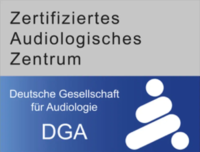About the disease
Middle ear defect is abnormality of the middle ear, as a result of which the person experiences pain in the ear or hearing loss. In severe cases middle ear defect can lead to conductive hearing loss. Middle ear defect can be either congenital or acquired. In congenital middle ear defect, the hearing problem could develop as a result of genetic predisposition or genetic mutation. Different viral and bacterial infections, such as mumps, measles and cytomegalovirus, can affect normal development of ear structure in fetus. It is important to avoid all infections during pregnancy not to cause development of any defects in an unborn child. Drinking alcohol and smoking during pregnancy can affect the development of fetus as well.
Middle ear is located behind the ear canal and near the eardrum. Middle ear is extremely important for normal perception of sounds from the environment as it passes them to the eardrum in the form of vibration which later on go to the brain. Brain receives these vibrations as signals and the person hears the sound.
Adults can develop otosclerosis which is abnormal growth of the bone in the middle ear. This is an acquired middle ear defect, but scientists have proved that otosclerosis is passed genetically and that is it an inherited disease. It never leads to complete hearing loss, but it can result in conductive hearing loss or sensorineural hearing loss. In otosclerosis the sound reaches the eardrum but it is unable to fully reach the inner ear, also known as cochlea. As a result, the person starts to develop problems with hearing. Otosclerosis usually starts to manifest itself in the adulthood. It is more common in women. In some cases otosclerosis can be triggered by pregnancy because the hormones change and they affect the middle ear. It is only the truth in women who are genetically predisposed to otosclerosis.
Symptoms
- Problems with the hearing
- Whooshing sound
- Inability to differentiate the low sounds
- Frequent ear infection
Diagnosis
- During a general examination the doctor will examine the ear canal to rule out the possibility of an infection. The doctor will examine the eardrum as well to determine if it functions normally.
- An otoscopy is used to examine the ear structures more closely and determine if they function normally.
- The doctor will check the hearing of a patient by asking him to close one of the ears and determining if hearing problems are present in one or both ears.
- An audiogram is the diagnostic method which measure the hearing of the person by transmitting the sound waves into the ears through the headphones.
- Imaging tests, such as CT scan, MRI or an X-ray can examine the middle ear and determine if there are any abnormalities such as bone growth.
- In women hormonal tests can be done as well to see if their hormonal balance is changed.
Treatment
- Surgical reconstruction is usually recommended in both congenital and acquired middle ear defects. This surgery aims to reconstruct the structure of middle ear so that the hearing of person improves and he/she can hear normally.
- After the surgery some days or week may pass necessary for recovery of middle ear. Afterwards, the patient may notice considerable improvement in hearing.
Authors:
This article was edited by medical experts, board-certified doctors Dr. Nadezhda Ivanisova, and Dr. Bohdan Mykhalniuk. For the treatment of the conditions referred to in the article, you must consult a doctor; the information in the article is not intended for self-medication!
Our editorial policy, which details our commitment to accuracy and transparency, is available here. Click this link to review our policies.




















